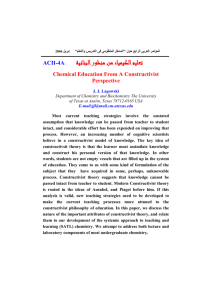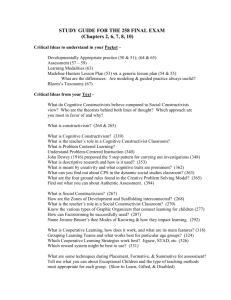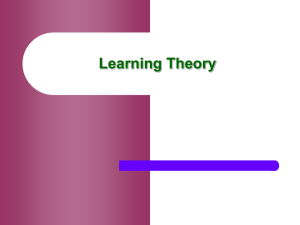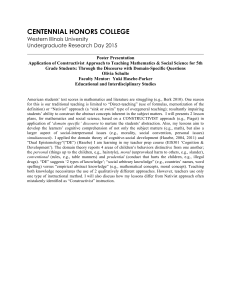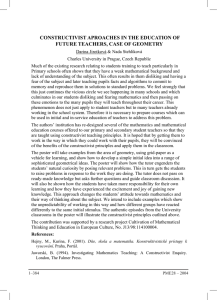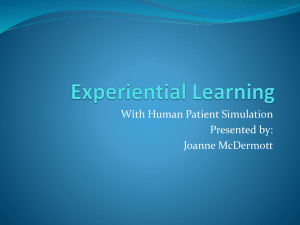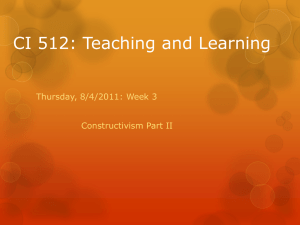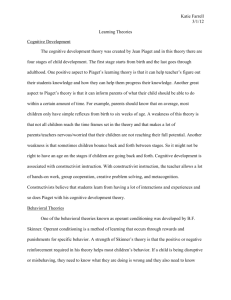Constructivist Learning in K-5 Physical Education
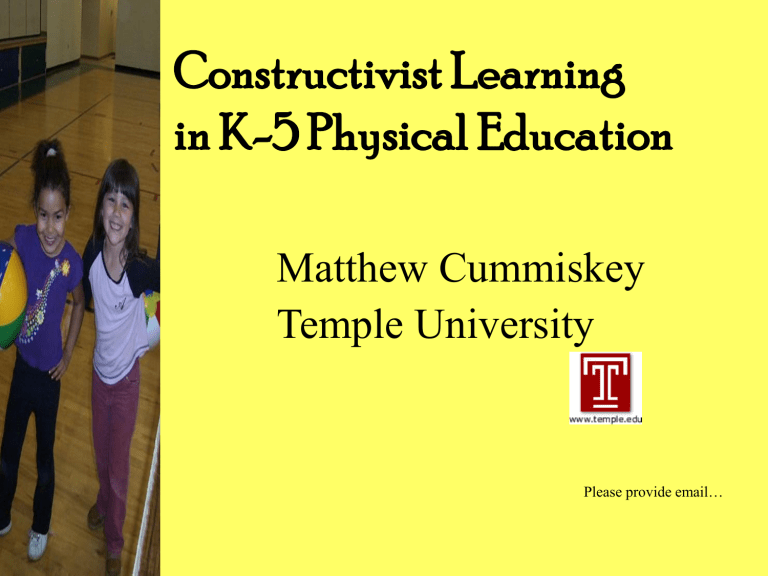
Constructivist Learning in K-5 Physical Education
Matthew Cummiskey
Temple University
Please provide email…
What is constructivist teaching
?
Constructivist Principles
• Encourage students to arrive at answers in different ways
• Invite students to describe how they generated solutions to the learning problems
• Have students articulate, defend, refine and adjust their own strategies to solve problems
• Establish classroom social norms for listening to other and sharing solutions
• Build learning on students previous knowledge while integrating concepts into broad understanding (pathways)
Advantages for Students-
Improves the following:
• Positive self image & confidence
– slanted rope
• Critical thinking
•
Movement vocabulary
• Creativity
• Self-responsibility
• Enjoyment of class
• Social interaction
Advantages for Teachers
• Get “inside” a child’s head
• Adjust teaching based on responses
• More interaction with students
• Involve multiple movement education concepts and skill themes
• Non-competitive or low competitive level
• Higher activity time
• Promotes leadership and success
• Higher interscholastic participation rates
Approaches:
IS:
• Guided Discovery
• Problem Solving
• Reciprocal
• Convergent
IS NOT:
• Command
• Practice
Constructivism at Its Best
The basics of
• Movement Education (K-3)
• Movement Education Schedule
• Skill Themes (4-5)
• Skill Themes Schedule
See material under “curriculum and teaching models” tab on homepage
Spiral Curriculum
Examples
K – Self Space
K1 – Range
1 st – Force
2 nd – Pathways
3 rd – Rhythm
4 th – Movement and Position
4 th – Bounce Pass
5 th – Cooperative
5 th – Throwing Challenge
Develop your own constructivist lesson using the movement education or skill themes approach
Constructivism – Helps children become skillful movers and develop positive attitudes towards themselves and physical activity.
Questions??
Documents:
– http://astro.temple.edu/~mdc49/ portfolio/conferences/presentati ons.htm
Contact me:
– mdc49@temple.edu

